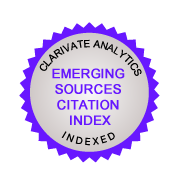Mood States as a Key Factor in Assessing Student Learning in Project Management Teaching
DOI:
https://doi.org/10.7160/eriesj.2025.180202Keywords:
project management, Profile of Mood States, Scrum, serious management game, teaching methodsAbstract
Hands-on experience is an essential part of project management education. We researched to determine whether our practical seminars organized as part of an undergraduate project management course provide the expected learning experience consistent with current project management practice. We organized two practical seminars for students in four study groups that utilized serious management games. The seminars focused on traditional and agile project management, emphasizing the differences in teamwork and emotional states of the participants between both approaches. We used the Profile of Mood States psychological method to evaluate the total mood changes of eligible participants (n = 49). We found that respondents' total mood and fatigue have improved significantly during practical seminars, confirming that serious management games have a positive effect on student learning and experience. We observed no significant difference in total mood improvement between traditional and agile seminars. We learned that the vigor of the participants has increased only for the agile seminars. This outcome is consistent with actual research and empirical experience in the field. The study results will be used to improve the quality of practical seminars next year.
References
Azanha, A., Argoud, A. R. T. T., Camargo Junior, J. B. D. and Antoniolli, P. D. (2017) ‘Agile project management with Scrum: A case study of a Brazilian pharmaceutical company IT project’, International Journal of Managing Projects in Business, Vol. 10, No. 1, pp. 121–142. https://doi.org/10.1108/ijmpb-06-2016-0054
Barcelos Bica, D. A. and Gouvea da Silva, C. A. (2020) ‘Learning Process of Agile Scrum Methodology With Lego Blocks in Interactive Academic Games: Viewpoint of Students’, Ieee Revista Iberoamericana de Tecnologias Del Aprendizaje-IEEE RITA, Vol. 15, No. 2, pp. 95–104. https://doi.org/10.1109/RITA.2020.2987721
Beck, K., Beedle, M., van Bennekum, A., Cockburn, A., Cunningham, W., Fowler, M., et al. (2001) ‘Manifesto for Agile Software Development’. Retrieved from https://agilemanifesto.org/
Berger, B. G. and Motl, R. W. (2000) ‘Exercise and mood: A selective review and synthesis of research employing the profile of mood states’, Journal of Applied Sport Psychology, Vol. 12, No. 1, pp. 69–92. https://doi.org/10.1080/10413200008404214
Bianchi, M., Marzi, G. and Guerini, M. (2020) ‘Agile, Stage-Gate and their combination: Exploring how they relate to performance in software development’, Journal of Business Research, Vol. 110, pp. 538–553. https://doi.org/10.1016/j.jbusres.2018.05.003
Boyle, G. J., Helmes, E., Matthews, G. and Izard, C. E. (2015) ‘Measures of Affect Dimensions’, in Measures of Personality and Social Psychological Constructs, Cambridge, MA: Academic Press.
Chennaoui, M., Bougard, C., Drogou, C., Langrume, C., Miller, C., Gomez-Merino, D. and Vergnoux, F. (2016) ‘Stress biomarkers, mood states, and sleep during a major competition: “Success” and “failure” athlete’s profile of high-level swimmers’, Frontiers in Physiology, Vol. 7. https://doi.org/10.3389/fphys.2016.00094
Chow, T. and Cao, D.-B. (2008) ‘A survey study of critical success factors in agile software projects’, Journal of Systems and Software, Vol. 81, No. 6, pp. 961–971. https://doi.org/10.1016/j.jss.2007.08.020
Ciric, D., Lalic, B., Gracanin, D., Tasic, N., Delic, M. and Medic, N. (2019) ‘Agile vs. Traditional Approach in Project Management: Strategies, Challenges and Reasons to Introduce Agile’, Procedia Manufacturing, Vol. 39, pp. 1407–1414. https://doi.org/10.1016/j.promfg.2020.01.314
De Gloria, A., Bellotti, F. and Berta, R. (2014) ‘Serious Games for education and training’, International Journal of Serious Games, Vol. 1, No. 1. https://doi.org/10.17083/ijsg.v1i1.11
Digital.ai (2024) ‘17th State of Agile Report: Analyst reports’, Retrieved from https://digital.ai/resource-center/analyst-reports/state-of-agile-report/
Djaouti, D., Alvarez, J. and Jessel, J.-P. (2011) ‘Classifying Serious Games: The G/P/S Model’, in Handbook of Research on Improving Learning and Motivation through Educational Games, Hershey, PA: IGI Global.
Guerrero-Calvache, M. and Hernández, G. (2023) ‘Team Productivity Factors in Agile Software Development: An Exploratory Survey with Practitioners’, in Applied Informatics, pp. 261–276, Switzerland: Springer Nature.
Havazík, O. and Pavlíčková, P. (2020) ‘Using a simulation game in the education of an agile approach’, Proceedings of the 17th International Conference on Efficiency and Responsibility in Education and Science (ERIE 2020), Prague: Czech Republic, pp. 76–82.
Heikura, E. E., Aunola, K., Tolvanen, A., Ryba, T. V. and Selänne, H. (2023) ‘Student-athletes’ mood state profiles: the role of sports, sex, and performance level in sports and in school’, Journal of Applied Sport Psychology, Vol. 35, No. 5, pp. 836–853. https://doi.org/10.1080/10413200.2022.2158250
Hellström, M. M., Jaccard, D. and Bonnier, K. E. (2023) ‘Systematic review on the use of serious games in project management education’, International Journal of Serious Games, Vol. 10, No. 2, pp. 3–24. https://doi.org/10.17083/ijsg.v10i2.630
Heuchert, J. P. and McNair, D. M. (2012) Profile of Mood States 2nd Edition, PsycTESTS Dataset, American Psychological Association (APA). Retrieved from: https://doi.org/10.1037/t05057-000
Highsmith, J. A. (2010) Agile project management, 2nd Ed., Upper Saddle River, N.J.: Addison-Wesley.
Hobbs, B. and Petit, Y. (2017) ‘Agile Methods on Large Projects in Large Organizations’, Project Management Journal, Vol. 48, No. 3, pp. 3–19. https://doi.org/10.1177/875697281704800301
Hron, M. and Obwegeser, N. (2022) ‘Why and how is Scrum being adapted in practice: A systematic review’, Journal of Systems and Software, Vol. 183, p. 111110. https://doi.org/10.1016/j.jss.2021.111110
Jones, M. T., Matthews, T. D., Murray, M., Van Raalte, J. and Jensen, B. E. (2010) ‘Psychological correlates of performance in female athletes during a 12-week off-season strength and conditioning program’, Journal of Strength and Conditioning Research, Vol. 24, No. 3, pp. 619–628. https://doi.org/10.1519/JSC.0b013e3181cc23c3
Kadenic, M. D., Koumaditis, K. and Junker-Jensen, L. (2023) ‘Mastering Scrum with a focus on team maturity and key components of Scrum’, Information and Software Technology, Vol. 153, p. 107079. https://doi.org/10.1016/j.infsof.2022.107079
Kesti, M., Ylitalo, A.-I. and Vakkala, H. (2022) ‘Management Game: Gamifying Leadership Learning’, in Research Anthology on Human Resource Practices for the Modern Workforce, Hershey, PA: IGI Global.
Liker, J. K. and Ross, K. (2016) The Toyota Way to Service Excellence: Lean Transformation in Service Organizations, New York, NY: McGraw Hill.
Likert, R. (1932) ‘A technique for the measurement of attitudes.’, Archives of Psychology, Vol. 22, No. 140, pp. 55.
Mahadevan, L., Kettinger, W. J. and Meservy, T. O. (2015) ‘Running on Hybrid: Control Changes when Introducing an Agile Methodology in a Traditional “Waterfall” System Development Environment’, Communications of the Association for Information Systems, Vol. 36, pp. 77–103. https://doi.org/10.17705/1cais.03605
Malik, M., Sarwar, S. and Orr, S. (2021) ‘Agile practices and performance: Examining the role of psychological empowerment’, International Journal of Project Management, Vol. 39, No. 1, pp. 10–20. https://doi.org/10.1016/j.ijproman.2020.09.002
Maynard, M. T., Gilson, L. L. and Mathieu, J. E. (2012) ‘Empowerment—Fad or Fab? A Multilevel Review of the Past Two Decades of Research’, Journal of Management, Vol. 38, No. 4, pp. 1231–1281. https://doi.org/10.1177/0149206312438773
McNair, D. M., Lorr, M. and Droppleman, L. F. (1971) Manual for the Profile of Mood States, San Diego, CA: Educational and Industrial Testing Services.
Miller, G. and Vaca Núnez, V. (2022) ‘The Project Win Game™: A Serious Game for Project Management Simulation’, European Conference on Games Based Learning, Vol. 16, No. 1, pp. 358–367. https://doi.org/10.34190/ecgbl.16.1.660
Niewöhner, N., Asmar, L., Wortmann, F., Röltgen, D., Kühn, A. and Dumitrescu, R. (2019) ‘Design fields of agile innovation management in small and medium sized enterprises’, Procedia CIRP, Vol. 84, pp. 826–831. https://doi.org/10.1016/j.procir.2019.04.295
Paasivaara, M., Heikkilä, V., Lassenius, C. and Toivola, T. (2014) ‘Teaching students Scrum using LEGO blocks’, in Companion Proceedings of the 36th International Conference on Software Engineering, New York: ACM. https://doi.org/10.1145/2591062.2591169
Paasivaara, M. and Lassenius, C. (2014) ‘Communities of practice in a large distributed agile software development organization – Case Ericsson’, Information and Software Technology, Vol. 56, No. 12, pp. 1556–1577. https://doi.org/10.1016/j.infsof.2014.06.008
PMI (2021) A Guide to the Project Management Body of Knowledge (PMBOK® Guide) – Seventh Edition and The Standard for Project Management (ENGLISH), 7th Ed., Newton Square, PA: Project Management Institute.
PRINCE2 7 (2023) Managing Successful Projects, 7th Edition, Greece: PeopleCert.
Roshan, R. and Santhosh, A. (2021) ‘Adoption of agile methodology for improving IT project performance’, Serbian Journal of Management, Vol. 16, No. 2, pp. 301–320. https://doi.org/10.5937/sjm16-26854
Rumeser, D. and Emsley, M. (2019) ‘Lessons learned from implementing project management games’, International Journal of Serious Games, Vol. 6, No. 1, pp. 71–92. https://doi.org/10.17083/ijsg.v6i1.130
Sahli, H., Selmi, O., Zghibi, M., Hill, L., Rosemann, T., Knechtle, B. and Clemente, F. M. (2020) ‘Effect of the verbal encouragement on psychophysiological and affective responses during small-sided games’, International Journal of Environmental Research and Public Health, Vol. 17, No. 23, pp. 1–11. https://doi.org/10.3390/ijerph17238884
Salido O., M. G., Borrego, G., Palacio Cinco, R. R. and Rodríguez, L.-F. (2023) ‘Agile software engineers’ affective states, their performance and software quality: A systematic mapping review’, Journal of Systems and Software, Vol. 204, p. 111800. https://doi.org/10.1016/j.jss.2023.111800
Shacham, S. (1983) ‘A Shortened Version of the Profile of Mood States’, Journal of Personality Assessment, Vol. 47, No. 3, pp. 305–306. https://doi.org/10.1207/s15327752jpa4703_14
Schwaber, K. and Sutherland, J. (2012) ‘The Scrum Guide′. Retrieved from https://www.scrum.org/resources/scrum-guide (Accessed: 18 March 2025).
Shore, J. (2021) The art of agile development, 2nd Edition, Sebastopoval, CA: O`Reilly Media.
Stuchlíková, I., Man, F. and Hagtvet, K. (2005) ‘Dotazník k měření afektivních stavů: Konfirmační faktorová analýza krátké české verze’, Československá Psychologie, Vol. 49, No. 5, pp. 459–469.
Sutherland, J. (2014) Scrum: The Art of Doing Twice in Half the Time, New York: Currency.
White, R. L., Babic, M. J., Parker, P. D., Lubans, D. R., Astell-Burt, T. and Lonsdale, C. (2017) ‘Domain-Specific Physical Activity and Mental Health: A Meta-analysis’, American Journal of Preventive Medicine, Vol. 52, No. 5, pp. 653–666. https://doi.org/10.1016/j.amepre.2016.12.008
Wilcoxon, F. (1945) ‘Individual Comparisons by Ranking Methods’, Biometrics Bulletin, Vol. 1, No. 6, pp. 80. https://doi.org/10.2307/3001968
Additional Files
Published
How to Cite
Issue
Section
License
Copyright (c) 2025 Josef Kunhart, Jan Bartoška

This work is licensed under a Creative Commons Attribution 4.0 International License.
Authors declare with this manuscript intended for publication to ERIES Journal that:
- all co-authors agree with the publication of the manuscript even after amendments arising from peer review;
- all co-authors agree with the posting of the full text of this work on the web page of ERIES Journal and to the inclusion of references in databases accessible on the internet;
- no results of other researchers were used in the submitted manuscript without their consent, proper citation, or acknowledgement of their cooperation or material provided;
- the results (or any part of them) used in the manuscript have not been sent for publication to any other journal nor have they already been published (or if so, that the relevant works are cited in this manuscript);
- submission of the manuscript for publication was completed in accordance with the publishing regulations pertaining to place of work;
- experiments performed comply with current laws and written consent of the Scientific Ethics Committee / National Animal Care Authority (as is mentioned in the manuscript submitted);
- grant holders confirm that they have been informed of the submitted manuscript and they agree to its publication.
Authors retain copyright and grant ERIES Journal right of first publication with the work simultaneously licensed under a Creative Commons Attribution License that allows others to share the published work with an acknowledgement of its initial publication in ERIES Journal. Moreover, authors are able to post the published work in an institutional repository with an acknowledgement of its initial publication in ERIES Journal. In addition, authors are permitted and encouraged to post the published work online (e.g. institutional repositories or on their website) as it can lead to productive exchanges, as well as earlier and greater citation of published work.






